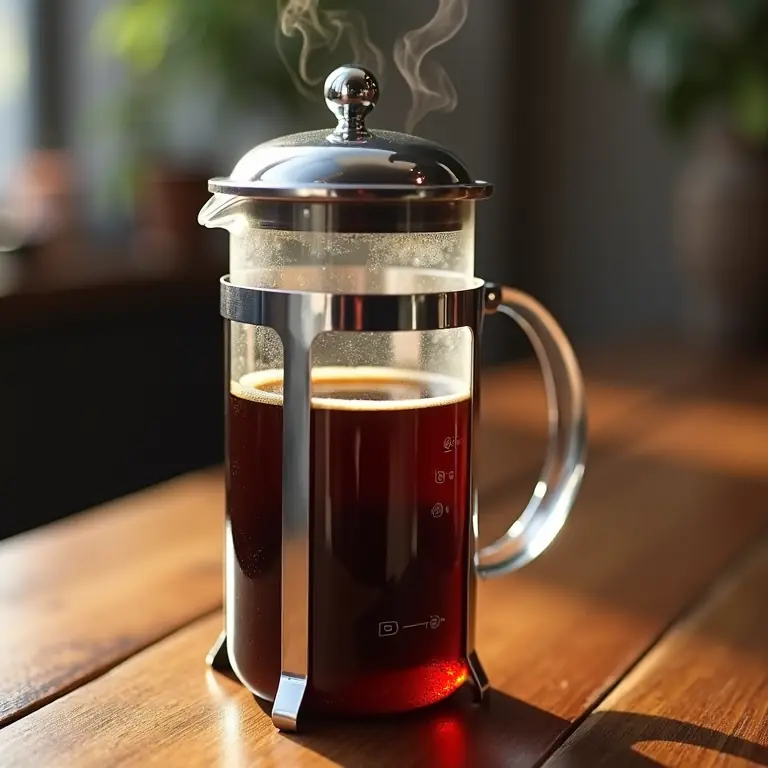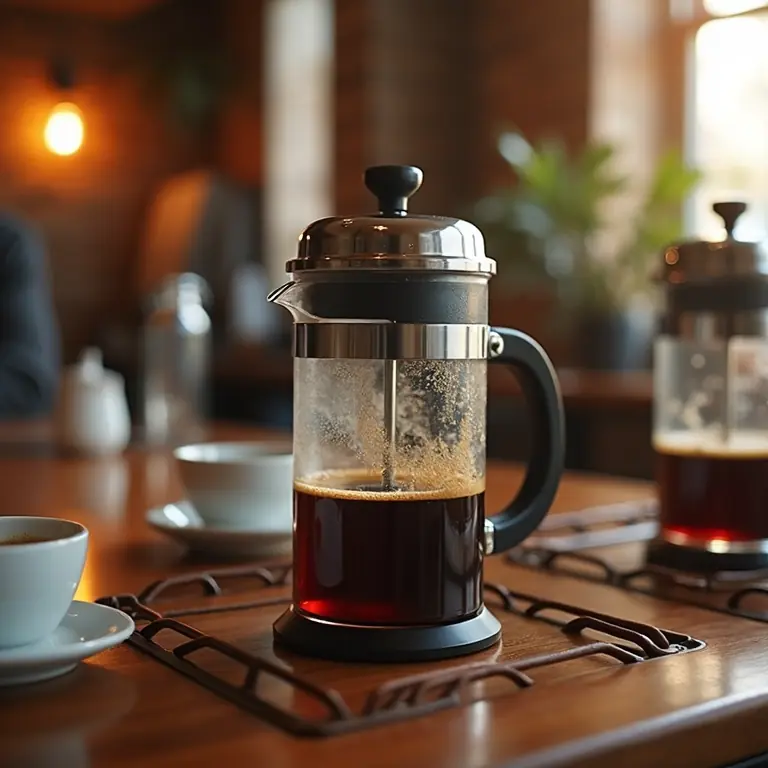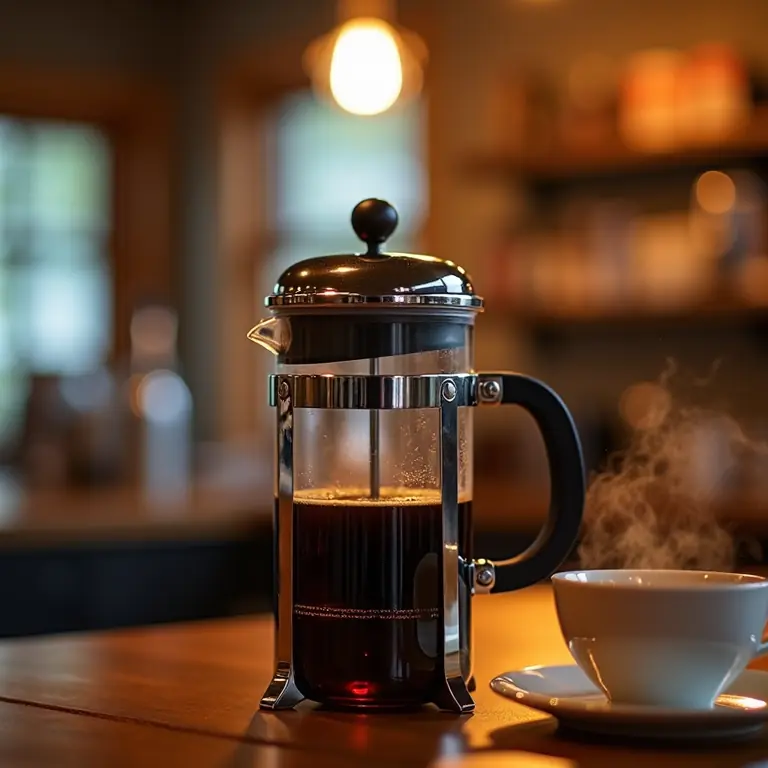Brew Better Coffee: A Friendly Guide to French Press Perfection
The French press – also known as a cafetière, coffee press, or plunger pot – is a beloved brewing method for coffee enthusiasts around the world. Its simplicity, combined with its ability to produce a rich, full-bodied cup of coffee, makes it a popular choice for both beginners and seasoned coffee drinkers. But achieving French press perfection isn’t simply about throwing grounds and hot water together. It’s a craft, a small ritual that, when mastered, rewards you with a consistently delicious brew. This guide will take you through everything you need to know, from the basics of the French press to advanced techniques for unlocking the full potential of your coffee beans.
Why Choose a French Press?
Before we dive into the how-to, let’s talk about why the French press is so special. Unlike drip coffee makers that use paper filters, the French press utilizes a metal mesh filter. This seemingly small difference has a significant impact on the final cup. Paper filters absorb oils and sediment, resulting in a cleaner, brighter brew. The French press, however, allows these oils – known as cafestol and kahweol – to pass through, contributing to a richer, more textured mouthfeel and a bolder flavor profile.
Here are some key benefits of brewing with a French press:
- Full-Bodied Flavor: The metal filter allows more of the coffee’s natural oils to remain in the brew, resulting in a fuller, more complex flavor.
- Simplicity: French presses are remarkably easy to use. There’s no complicated machinery or paper filters to worry about.
- Portability: They’re relatively lightweight and don’t require electricity, making them ideal for camping, travel, or simply enjoying coffee anywhere.
- Control: You have complete control over the brewing process – from water temperature to steep time – allowing you to tailor the coffee to your exact preferences.
- Cost-Effective: While the initial investment in a French press can vary, it’s a relatively inexpensive brewing method in the long run, as you don’t need to purchase disposable filters.
What You’ll Need: The Essential Equipment
Getting started with French press coffee is straightforward. You don’t need a lot of fancy equipment, but having the right tools will make a world of difference. Here’s a checklist:

- French Press: Obvious, right? French presses come in various sizes, from single-serving models to those that can brew enough coffee for a crowd. Choose one that suits your needs.
- Coffee Grinder: This is arguably the most important piece of equipment. A burr grinder is highly recommended over a blade grinder. Burr grinders produce a consistent grind size, crucial for even extraction. Blade grinders chop the beans unevenly, leading to a muddy, bitter brew.
- Coffee Beans: Freshly roasted, high-quality beans are the foundation of any great cup of coffee. Experiment with different origins and roasts to find your favorites.
- Water Kettle: A gooseneck kettle provides better pour control, but any kettle that can heat water to the desired temperature will work.
- Kitchen Scale: For precise measurements of both coffee grounds and water. Consistency is key!
- Timer: To ensure accurate brewing times.
- Spoon or Stirrer: For gently stirring the coffee grounds.
The Brewing Process: Step-by-Step
Now, let’s get down to business. Here’s a detailed guide to brewing the perfect French press coffee:
- Heat the Water: Heat water to around 200°F (93°C). If you don’t have a temperature-controlled kettle, bring the water to a boil and let it sit for about 30 seconds. Too hot water will scald the grounds and result in a bitter taste.
- Grind the Coffee: Grind your coffee beans to a coarse grind, similar to sea salt. This is crucial. A fine grind will slip through the filter and create a muddy cup.
- Add Coffee to the French Press: A general rule of thumb is a coffee-to-water ratio of 1:15 to 1:17 (e.g., 30 grams of coffee to 450-510 grams of water). Adjust this ratio to your taste.
- Bloom the Coffee: Pour just enough hot water over the grounds to saturate them. This is called the “bloom.” Let it sit for 30-45 seconds. You’ll notice the coffee bubbling and releasing carbon dioxide. This process degasses the coffee and enhances its flavor.
- Pour the Remaining Water: Slowly pour the remaining water over the saturated grounds, ensuring they are evenly covered.
- Stir Gently: Give the coffee a gentle stir to ensure all the grounds are submerged.
- Steep the Coffee: Place the lid on the French press, but do not press down yet. Allow the coffee to steep for 4 minutes. This is the sweet spot for most coffees, but you can experiment with longer or shorter steep times to find your preference.
- Press Slowly: After 4 minutes, slowly and steadily press the plunger down. Avoid forcing it. If you encounter resistance, lift the plunger slightly and try again.
- Serve Immediately: Once the plunger is fully depressed, pour the coffee immediately into your cup. Leaving the coffee in the French press will continue to extract, leading to a bitter taste. If you’re not drinking all the coffee at once, transfer it to a thermal carafe.
Troubleshooting Common French Press Problems
Even with careful attention to detail, you might encounter some common issues. Here’s how to troubleshoot them:
- Bitter Coffee: Could be caused by over-extraction (too fine a grind, too hot water, or too long steep time). Try a coarser grind, lower water temperature, or shorter steep time.
- Weak Coffee: Could be caused by under-extraction (too coarse a grind, too cool water, or too short steep time). Try a finer grind, hotter water, or longer steep time.
- Muddy Coffee: Usually caused by a grind that is too fine, or by disturbing the grounds during pressing. Ensure you’re using a coarse grind and pressing the plunger slowly and steadily.
- Coffee Tastes Sour: Often a sign of under-extraction. Increase your brew time or use a finer grind.
- Difficulty Pressing the Plunger: This often indicates the grind is too fine. You may also have too many grounds for the amount of water.
Beyond the Basics: Advanced Techniques
Once you’ve mastered the basic brewing process, you can start experimenting with advanced techniques to further refine your coffee:

- Preheating the French Press: Warming the French press before brewing helps maintain a consistent water temperature. Simply fill it with hot water for a few minutes, then discard the water before adding the coffee grounds.
- Rinsing the Filter: Rinsing the metal filter with hot water before brewing can remove any metallic taste.
- Stirring Techniques: Experiment with different stirring techniques. Some prefer a gentle stir to ensure even saturation, while others prefer to leave the grounds undisturbed.
- Water Quality: Use filtered water. The minerals in tap water can affect the taste of your coffee.
- Coffee Bean Storage: Store your coffee beans in an airtight container in a cool, dark place. Avoid storing them in the refrigerator or freezer, as this can affect their flavor.
- Adjusting the Ratio: Don’t be afraid to play with the coffee-to-water ratio. A higher ratio (more coffee) will result in a stronger brew, while a lower ratio (less coffee) will result in a milder brew.
Cleaning and Maintenance
Proper cleaning and maintenance are essential for keeping your French press in top condition. After each use:
- Discard the Grounds: Do not pour the coffee grounds down the drain, as they can clog your pipes. Dispose of them in the trash or compost them.
- Rinse Thoroughly: Rinse all parts of the French press with hot water.
- Disassemble and Wash: Disassemble the plunger and wash all components with warm, soapy water.
- Dry Completely: Ensure all parts are completely dry before reassembling.
- Deep Clean Regularly: Every few weeks, give your French press a deep clean with a mixture of baking soda and water to remove any stubborn stains or residue.
Resources to Further Your Coffee Journey
Want to dive deeper into the world of coffee? Here are some helpful resources:
- Specialty Coffee Association (SCA): https://sca.coffee/ – A leading authority on coffee knowledge and standards.
- CoffeeGeek: https://www.coffeegeek.com/ – A comprehensive website with articles, reviews, and forums for coffee enthusiasts.
- James Hoffmann: https://www.youtube.com/c/JamesHoffmann – A renowned coffee expert with a popular YouTube channel.
French Press and Beyond
Mastering the French press is a rewarding experience. It’s a journey of experimentation and discovery that allows you to truly appreciate the nuances of coffee. But don’t stop there! Exploring other brewing methods, like pour-over or Aeropress, can broaden your coffee horizons. And if you’re looking to enhance your creative skills, why not check out a beginner’s guide to food photography to capture the beauty of your perfect brew. For boosting your efficiency while enjoying your coffee, consider learning keyboard shortcuts. If you’re a fan of preserving moments, creating a family timeline can be a great project.
So, grab your beans, heat your water, and get brewing! With a little practice, you’ll be on your way to consistently brewing exceptional French press coffee.


Discussion about this post